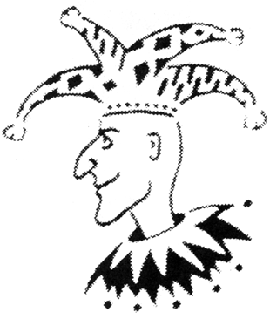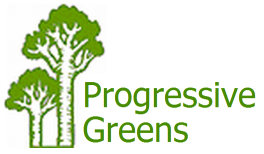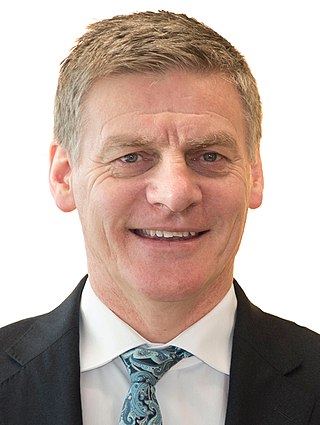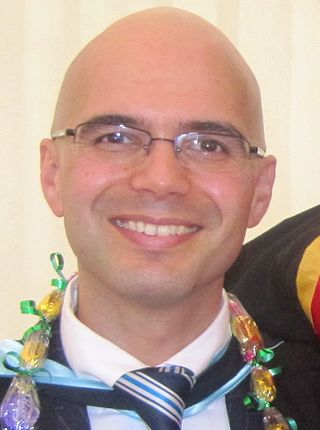The Christian Heritage Party of New Zealand was a New Zealand political party espousing Christian values and conservative views on social policy. Although it never won seats in an election, it came close to doing so in 1996 as part of the Christian Coalition and briefly had a member in Parliament.
The Green Party of Aotearoa New Zealand, commonly known as Green or the Greens, is a green and left-wing political party in New Zealand. Like many green parties around the world, it has four pillars. The party's ideology combines environmentalism with left-wing and social democratic economic policies, including well-funded and locally controlled public services within the confines of a steady-state economy. Internationally, it is affiliated with the Global Greens.
The Alliance was a left-wing political party in New Zealand. It was formed at the end of 1991 by the linking of four smaller parties. The Alliance positioned itself as a democratic socialist alternative to the centre-left New Zealand Labour Party. It was influential throughout the 1990s, but suffered a major setback after its founder and leader, Jim Anderton, left the party in 2002, taking with him several of its members of parliament (MPs). After the remaining MPs lost their seats in the 2002 general election, some commentators predicted the demise of the party.

The 1996 New Zealand general election was held on 12 October 1996 to determine the composition of the 45th New Zealand Parliament. It was notable for being the first election to be held under the new mixed-member proportional (MMP) electoral system, and produced a parliament considerably more diverse than previous elections. Under the new MMP system, 65 members were elected in single-member districts by first-past-the-post voting, while a further 55 "top-up" members were allocated from closed lists to achieve a proportional distribution based on each party's share of the nationwide party vote.

Jeanette Mary Fitzsimons was a New Zealand politician and environmentalist. She was the co-leader of the Green Party of Aotearoa New Zealand from 1995 to 2009, and was a Member of Parliament from 1996 to 2010.

The Values Party was a New Zealand political party. It is considered the world's first national-level environmentalist party, pre-dating the use of "Green" as a political label. It was established in May 1972 at Victoria University of Wellington. Its first leader was Tony Brunt, and Geoff Neill, the party's candidate in the Dunedin North electorate, became the Deputy Leader.

The McGillicuddy Serious Party (McGSP) was a satirical political party or joke party in New Zealand in the late 20th century. Between 1984 and 1999, it provided "colour" to ensure that citizens not take the political process too seriously. The party's logo, the head of a medieval court jester, indicated the intention to critique current systems by poking fun at them.

The Progressive Green Party was an environmentalist political party in New Zealand in the 1990s. It was a "blue-green" party – that is, one that is economically right-wing ("blue"), rather than left-wing ("red"), as well as environmentalist ("green").

Margaret Ann Hartley is a former New Zealand member of parliament, a former mayor of North Shore City, and a member of the Labour Party.
Matthew Peter Robson is a New Zealand politician. He was deputy leader of the Progressive Party, and served in the Parliament from 1996 to 2005, first as a member of the Alliance, then as a Progressive.

Auckland Central is a New Zealand electoral division returning one member to the New Zealand House of Representatives. The electorate is currently represented by Chlöe Swarbrick, a member of the Green Party; she has represented the seat since 2020.

Epsom is a New Zealand electorate in Auckland, returning one Member of Parliament to the New Zealand House of Representatives. Since the 2014 general election, Epsom has been represented by David Seymour, the leader of the ACT Party.

Kaikōura is a New Zealand parliamentary electorate, returning a single MP to the New Zealand House of Representatives. The current MP for Kaikōura is Stuart Smith of the National Party, who won the 2014 election.

New Conservatives is a conservative political party in New Zealand. Some opponents and observers have described the party's policies as far-right, though the party now states it has moved to a "more centrist" position under new leadership. It advocates for lower taxation, anti-abortion measures and austerity cuts.

The 2017 New Zealand general election took place on Saturday 23 September 2017 to determine the membership of the 52nd New Zealand Parliament. The previous parliament was elected on 20 September 2014 and was officially dissolved on 22 August 2017. Voters elected 120 members to the House of Representatives under New Zealand's mixed-member proportional (MMP) voting system, a proportional representation system in which 71 members were elected from single-member electorates and 49 members were elected from closed party lists. Around 3.57 million people were registered to vote in the election, with 2.63 million (79.8%) turning out. Advance voting proved popular, with 1.24 million votes cast before election day, more than the previous two elections combined.

The Mangere by-election of 1977 was a by-election for the electorate of Mangere on 26 March 1977 during the 38th New Zealand Parliament. The by-election resulted from the resignation of the previous member Colin Moyle after accusations against him in parliament, and he was replaced by David Lange, also of the Labour Party. Apart from Lange, there were seven other candidates in the by-election.
Stephen Laurence Rainbow is a former New Zealand politician. He is manager of Auckland Transport's key relationships unit.
The Teal Deal is a hypothetical blue–green political alliance between the Green Party of Aotearoa New Zealand and the New Zealand National Party. The term Teal Deal is a reference to the medium blue-green colour teal, which combines the political colours that represent the two parties.

Vernon Ivan Tava is a barrister living in Auckland, New Zealand. He is the founder and leader of the Sustainable New Zealand Party and a former candidate for the Green Party of Aotearoa, New Zealand.
The New Zealand TEA Party was a registered political party in New Zealand. The party was led by John Hong. The party contested the 2020 general election, but did not win any seats.













